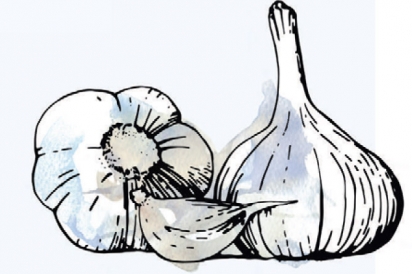A Nutritionist’s Tips
… For Adding Extra Nutrients to Your Favorite Comfort Foods
• Add finely chopped kale, spinach or chard to mac ‘n’ cheese or scalloped potatoes.
• Serve your pasta meals on a bed of mixed greens.
• Blanch or steam fresh veggies (carrots, greens, squash, turnips), purée and then add to your favorite pasta sauce. This works especially well in tomato-based sauces like marinara.
• Add blanched or raw greens to smoothies and blend well.
• Use cooked spaghetti squash, blanched zucchini or other fall or winter squashes as noodles with your favorite pasta sauce. To hide them, you can mix them with traditional noodles.
• Add ground chia, ground psyllium husk or a good prebiotic fiber to smoothies, salads, sauces, baked goods, etc., to specifically feed your microbiome. My favorite brands include Garden of Life Dr. Formulated Organic Fiber Prebiotic; Hyperbiotics Prebiotic; Prebiotin; Pinnaclife Prebiotic Fiber; and Bulletproof Innerfuel Prebiotic.
• Start your kids off young! Feed them loads of complex flavors from your own plate to develop their palate for diverse flavors and a taste for good nutrients.
… For Eating for Your Gut Bugs
Many dieticians and nutritionists are recommending that clients eat for gut health these days. In the past 10 years, we have learned a lot about the human gut microbiome—the collection of bacteria, fungi and other microbes that live in our guts and help us process food into nutrients that will feed our cells and make us healthy and strong. Eating for our gut means consuming both probiotics and prebiotics. Just a few teaspoons a day can help build a healthy gut.
PROBIOTICS
PRObiotics are live healthy bacteria found in food (or supplements).
PREBIOTICS
PREbiotics are food for the healthy bacteria in the gut.
DID YOU KNOW? Both are essential for good gut health!
Try these examples!
Probiotic Foods:
• Kimchi
• Apple cider vinegar (raw)
• Kvass
• Sauerkraut
• Kombucha
• Fermented veggies
• Grass-fed yogurt
Prebiotic Foods:
• Asparagus
• Onions (raw)
• Chicory root
• Garlic
• Dandelion roots
• Jicama
• Leeks
• Psyllium husks
… For Buying Clean Food
2020 Environmental Working Group DIRTY DOZEN
These foods typically have high levels of pesticides. Buy organic if at all possible:
1. Strawberries
2. Spinach
3. Kale
4. Nectarines
5. Apples
6. Grapes
7. Peaches
8. Cherries
9. Pears
10. Tomatoes
11. Celery
12. Potatoes
2020 Environmental Working Group CLEAN 15
These foods typically have lower levels of pesticides. You can get away with buying conventional to save money:
1. Avocados
2. Sweet corn*
3. Pineapples
4. Onions
5. Papaya*
6. Sweet peas
7. Eggplant
8. Asparagus
9. Cauliflower
10. Cantaloupe
11. Broccoli
12. Mushrooms
13. Cabbage
14. Honeydew
15. Kiwi
*A small amount of papaya, sweet corn and summer squash are grown using genetically modified seeds. If you wish to avoid GMOs, buy these foods in organic varieties.









